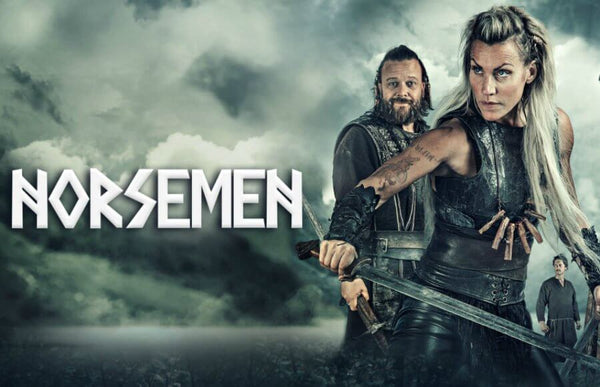
There are many accounts of warrior women in the Viking sagas, however, they are only legend. There is much evidence to confirm the existence of male warriors in the Viking age through burials and grave goods, however, there has been little archaeological evidence to suggest that shieldmaidens ever existed.
A grave found in Birka in the 1880s, assumed to be the remains of a Viking male, has in fact been identified as the remains of a warrior women using genome testing. These results have proven controversial however, as the lack of the male (y) chromosome is the only proof needed.
Whilst the identity of this warrior women has not been discovered, she has been named as Brynhild of Birka, by the wider archaeological community. Brynhild meaning ‘fighter in chainmail’ in Swedish.
Charlotte Hedenstierna-Jonson, of Uppsala University was the main researcher behind this investigation. She took samples from a tooth and the left arm bone when testing the gender of these remains (Hedenstierna-Jonson, 2017, pp. 855).
The grave is undoubtedly that of a warrior. The grave goods included, swords, arrows, 2 horses, a spear and an axe. The most significant find from the grave appears to be a game board and game pieces which were used in planning battle strategies. Only a high-ranking military leader would have use for these, thus confirming the female’s status as a warrior woman (Hendenstierna-Jonson, 2017, pp.854).

Sceptics will argue that the lack of wounds on the deteriorated skeletal remains, suggest that this cannot be the remains of a warrior woman. However only 2 of the 49 warrior graves found in Birka contained battle wounds (Hedenstierna-Jonson, 2017, pp.858). It is more common to find battle wounds within mass graves from the Viking age (Loe, Boyle, Webb, & Score, 2014; Price et al., 2016).
Perhaps the legends within the sagas had a more prominent and physical place within Viking society than originally thought. Some notable examples of similar warrior women within folklore include;
The legend of Blenda
Blenda was a Viking shieldmaiden who infamously tricked Danish soldiers, along with some help from her fellow shieldmaidens and killed them all in their sleep. The King of Sweden at the time, King Alles was so impressed, that he granted Blenda and all other women the right to inheritance from their parents, the right to have warlike instruments accompany them down the aisle on their wedding day and the right to wear a belt as a sign of eternal vigilance (Stalberg, 2016, pp. 40).

Shieldmaidens of Bravellier
The battle of Bravellir is said to have happened in 770 AD and is described in the sagas as having taken place on the bravellier, the central plain in Ostergotaland which is featured in Norse mythology. Scholars argue that the telling of this in the sagas symbolises the end of paganism and the beginning of Christianity for the Norse people. Whilst it is mentioned in the Hervara saga ok heiorek, bosa saga ok herrauos and sogubrot of nokk rum fornkonungum it is most notably mentioned in Gesta Danorum by Saxo Grammaticus.
The sagas tell us that Harald Wartooth who ruled over Denmark and East Gotaland realised that he was getting old and might not get the chance to die in battle and go to Valhalla. Legend has it that he then challenged Sigurd Hring to battle. Sigurd was the ruler of Sweden and West Gotaland.

It is said that over 300 shieldmaidens led Haralds forces into battle. Wisna was the leader of this group and it sometimes known as hed, Visna of Slavs and Hedborg. It is believed that she had her right hand cut off in this battle by the cursed hero Starkad. Another shieldmaiden by the name of Weiborg is said to have slain many champion warriors fighting for Sigurd before meeting her death in the battle.
It was believed that Harald had always been favoured by Odin in battle. As Sigurd’s forces began to outplay Harald it became evident that Odin began to favour a new king, Sigurd (Arnold & Finlay, 2010, pp. 1).
Lagertha
Lagertha is first documented in the Gesta Danorum by Saxo Grammaticus in 1185, she is described as a fierce shield maiden who had the courage of a man and fought at the front of every battle.
However, there is little evidence to suggest that Frøya ever existed outside of the fictional world of Norsemen.
It is without a doubt that Shieldmaidens have their place within Viking folklore, perhaps now the role they played in real life with become more apparent.
References
Arnold, M. and Finlay, A. (2010). Making history. London: Viking Society for Northern Research, University College London.
Chance, J. (2005). ‘Woman as Hero in Old English Literature’, Wipf and Stock Publishers.
Loe, L., Boyle, A., Webb, H., & Score, D. (2014).‘Given to the ground’: A Viking age mass grave on ridgeway hill, Weymouth. Oxford: Oxford Archaeology.
Price, T., Peets, J., Allmäe, R., Maldre, L., & Oras, E. (2016). Isotopic provenancing of the Salme ship burials in pre-Viking Age Estonia. Antiquity, 90, 1022–1037. https://doi.org/10.15184/aqy.2016.106
Saxo, G. (1185). Gesta Danorum.
